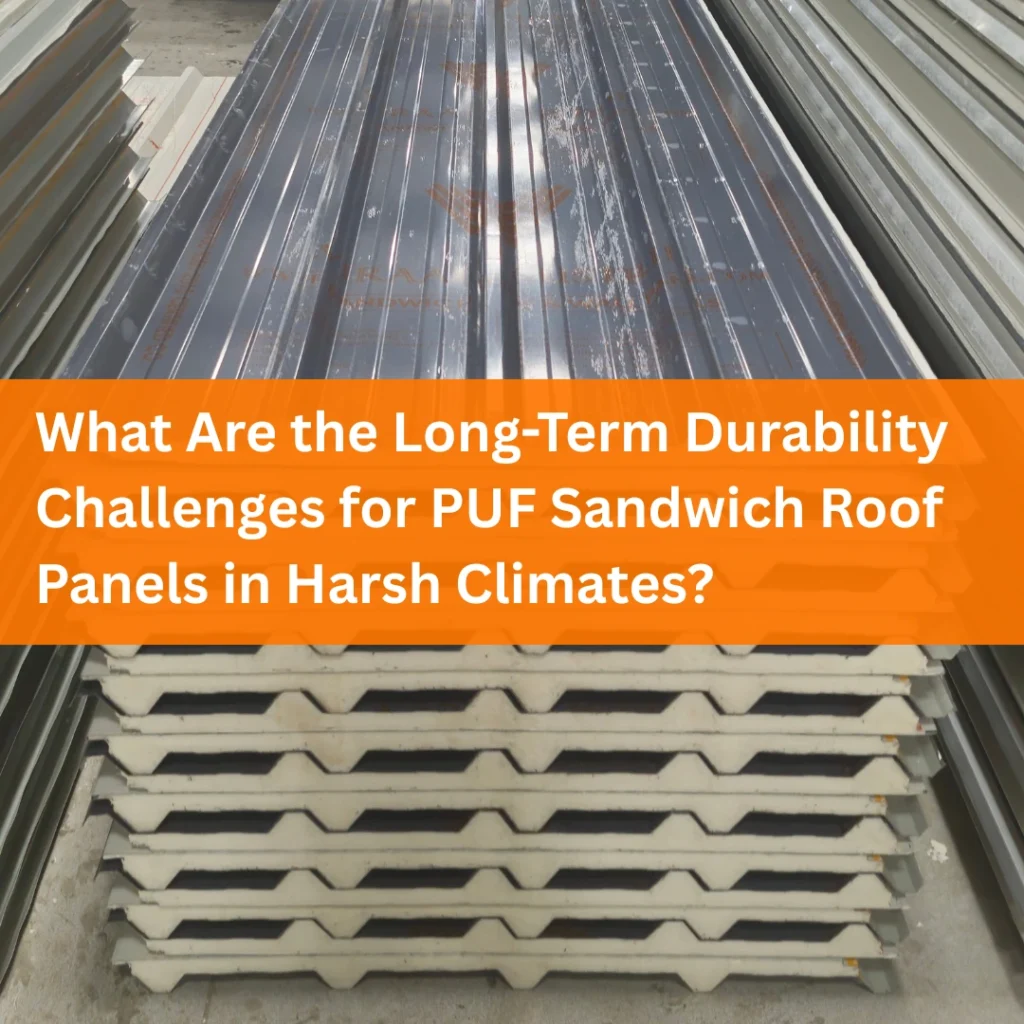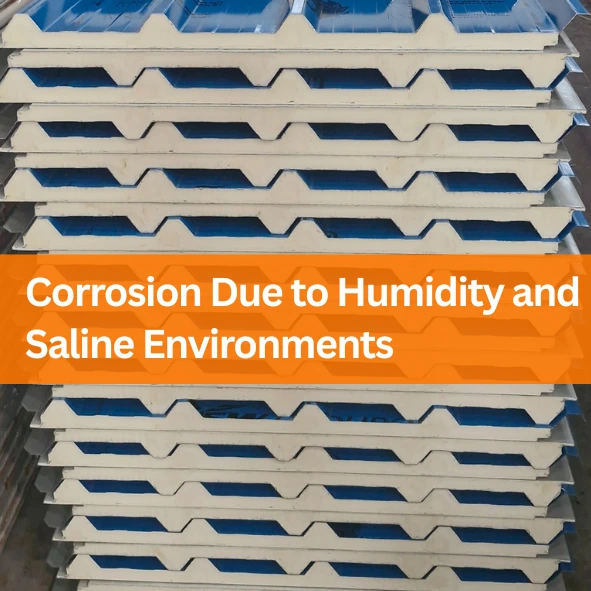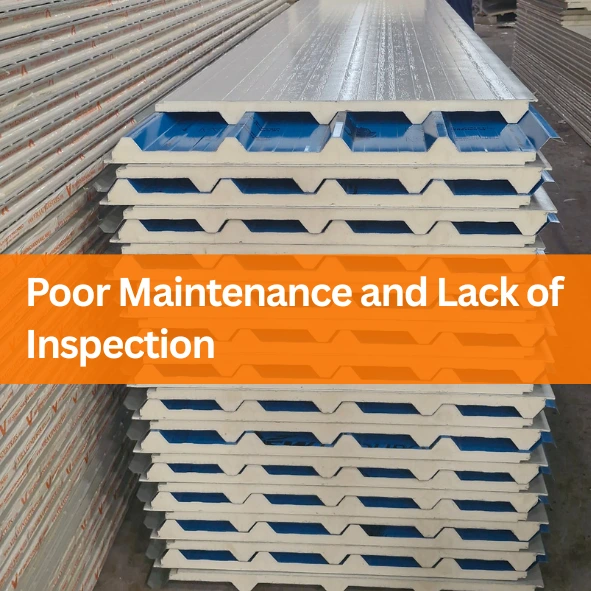
PUF sandwich roof panels are one of the most efficient and reliable roofing solutions used in industrial, commercial, and cold storage buildings. Known for their superior insulation and lightweight structure, these panels play a vital role in maintaining temperature control and energy efficiency. However, when exposed to harsh weather conditions—such as extreme heat, humidity, UV radiation, and heavy rainfall—the durability of PUF sandwich roof panels can be challenged. Understanding these factors and implementing preventive solutions can significantly extend their lifespan and performance.
Effects of UV Radiation on PUF Roof Panels
In tropical or high-temperature climates, UV rays can degrade the outer surface of roof panels over time. Prolonged exposure leads to color fading, chalking, and surface cracking, especially in panels with metal facings that lack protective coatings.
Mitigation: Using UV-resistant coatings or pre-painted galvanized sheets can protect the outer surface. Regular cleaning and inspection help identify early signs of degradation before they cause structural issues.
Moisture Ingress and Water Leakage
Moisture penetration is one of the biggest enemies of PUF sandwich roof panel durability. When joints are not properly sealed, water can seep into the polyurethane core, leading to loss of insulation properties, corrosion of the metal facing, and fungal growth.
Mitigation: Apply high-quality sealants at joints, use waterproof fasteners, and ensure proper slope design for drainage. Periodic maintenance of flashing and sealant joints can prevent long-term damage.
Thermal Expansion and Contraction
Temperature fluctuations cause the metal faces of PUF roof panels to expand and contract, putting stress on panel joints and fasteners. Over time, this movement can cause panel distortion or loosening, reducing the overall structural stability.
Mitigation: Use flexible joint systems, expansion gaps, and mounting clips that can absorb thermal movement. Choosing panels with proper thermal resistance and mechanical flexibility is essential in regions with wide temperature variations.
Corrosion Due to Humidity and Saline Environments

In coastal or humid regions, the high salt content in the air can cause corrosion on the outer steel sheets of the panels. Once corrosion starts, it spreads quickly, weakening the roof’s integrity.
Mitigation: Use galvalume or PVDF-coated panels that offer superior corrosion resistance. Regular washing with fresh water and applying protective paint coatings can prevent salt buildup and oxidation.
Impact of Wind and Storm Loads
High winds, storms, or hail can loosen fasteners and damage the outer layers of PUF panels. Poor installation or inadequate anchoring can further increase the risk of panel displacement.
Mitigation: Ensure panels are installed according to wind load design standards (such as IS 875 or ASCE 7). Use high-quality fasteners and bracing systems to secure the panels properly.
Delamination and Structural Fatigue
Delamination occurs when the adhesive bond between the metal facings and the polyurethane core weakens due to heat or moisture. This can lead to air gaps, reduced insulation, and eventual panel failure.
Mitigation: Choose panels manufactured using advanced lamination techniques and tested for bond strength. Avoid mechanical impact during installation and transport.
Poor Maintenance and Lack of Inspection

Even the most durable PUF sandwich roof panels require periodic maintenance. Accumulation of debris, unsealed edges, or neglected repairs can reduce their life expectancy significantly.
Mitigation: Establish a routine maintenance plan—inspect roofs every six months, clean dirt and debris, and reapply sealants where necessary. Early detection of small defects can prevent major repairs.
Chemical Exposure
In industrial settings, exposure to harsh chemicals, fumes, or industrial gases can affect both the metal facings and the polyurethane foam.
Mitigation: Choose chemical-resistant coatings and avoid direct contact between panels and corrosive agents. Proper ventilation systems can help minimize chemical buildup.
Conclusion
The long-term durability of PUF sandwich roof panels in harsh climates depends on the quality of materials, installation practices, and regular maintenance. While challenges like UV radiation, corrosion, and thermal expansion are inevitable, proactive steps—such as using high-quality coatings, proper sealing, and periodic inspections—can significantly enhance performance. Investing in durable materials and implementing preventive maintenance strategies not only protects your infrastructure but also ensures energy efficiency and long-term cost savings.
Frequently Asked Questions
Prolonged exposure to sunlight’s UV rays can degrade the outer metal coating or paint layer. Effects include color fading, chalking (a powdery residue on surfaces), and even micro-cracking of the metal skin. These degrade the panel’s aesthetics and may lead to exposure of the bare metal, which makes it more vulnerable to corrosion.
A PUF (Polyurethane Foam) sandwich panel is made up of a core of polyurethane foam between two outer metal facings (usually steel or aluminum). Its advantages include high thermal insulation, reduced weight, and good strength. Compared to panels that use other cores (e.g. PIR, EPS), PUF typically offers better insulation and a more rigid structure, though each material has trade-offs in cost, fire rating, moisture resistance, etc.
While it depends on many factors (quality of material, installation, maintenance, severity of climatic stress → UV exposure, humidity, storms), with good quality panels, correct installation, and regular maintenance, one can expect PUF sandwich roof panels to last 20-30 years or more, even in challenging climates.
Yes, several. Some helpful choices include:
Using UV-resistant coatings or pre-painted galvanized or PVDF-coated steel for the outer metal facings.
Design features like proper slopes/drainage, flexible joints, and expansion gaps.
Higher quality sealants and waterproof fasteners.
Regular protective maintenance (washing, repainting, etc.).



